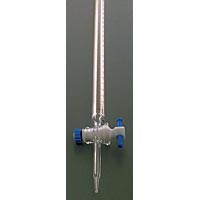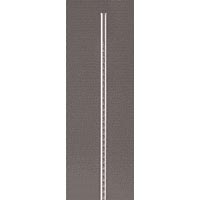Burets: Choose and Use Guide Buret selection should be conditional upon your laboratory’s needs and subject to your budget. There are two main styles of buret that are utilized in the laboratory.
 
Geissler burets are often the more precise and expensive style having a molded stopcock controlling the flow of liquid through the tip. The Geissler buret offers a more accurate delivery system and increased longevity as long as regular maintenance is monitored. In the other style, the Mohr buret, a length of tubing connects a separate tip and the buret tube utilizing a clamp or glass bead to regulate flow. Of the two, the Mohr is the economical choice with simplicity and ease in replacement and repair being advantages.
Burets are available in glass or plastic with each type having its own advantages. Glass burets are considered to be more accurate and reliable, despite breakage being a problem. Plastic burets are an economical and shatterproof alternative that may have a tendency to lose accuracy and warp over time. Of the three sizes (25, 50, 100mL) the 50mL size is the most popular.
Care and Maintenance - Burets should be cleaned after every use to prevent contamination and stopcock seizure or malfunction. To properly clean your buret, remove the stopcock (Geissler form buret) or rubber tip assembly (Mohr form buret) and wash the buret tube with detergent and water. Rinse thoroughly with tap water to remove dirt and excess detergent. Then rinse with distilled water and dry. Wash the stopcock or rubber tip assembly separately in the same fashion. In Geissler form burets the glass stopcock must be lubricated with a small amount of lubricant before being replaced. Be sure to cover the top of your buret when not in use.
|
